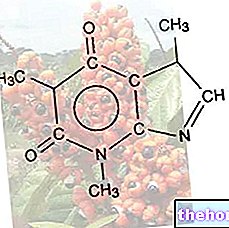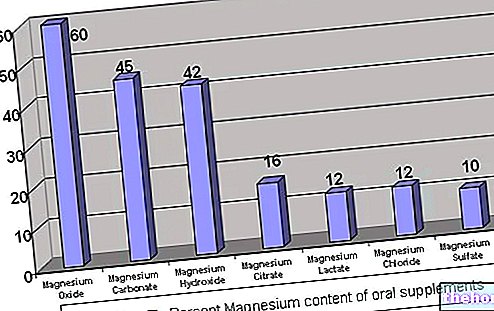
About BCAA Hardcore - Muscletech
BCAA Hardcore - Muscletech
Food supplement of branched chain amino acids with Vitamin B6 and Vitamin B12
FORMAT
Pack of 150 tablets
INGREDIENTS: Blend of branched chain amino acids - Stabilizers: microcrystalline cellulose, calcium phosphate, polyvinylpyrrolidone - Anti-caking agents: hydroxypropylmethylcellulose, stearic acid, magnesium stearate, silicon dioxide - Coating: hydroxypropylmethylcellulose, titanium dioxide, polydextrioxide, polydextrioxide chain Sweetener: sucralose - pyridoxine hydrochloride - cyanocobalamin.
For 5 tablets: L-leucine 2024 mg - L-valine 1012 mg - L-isoleucine 1012 mg - Vitamin B6 3 mg - Vitamin B12 1.5 mcg

Branched chain amino acids - belonging to the group of essential amino acids, they must necessarily be introduced through the diet. The easy food availability of Leucine, Isoleucine and Valine, allows to satisfy the need for branched-chain amino acids without too many dietary sacrifices, even in food plans vegetarians. Absorption occurs in the intestine, through a transport facilitated by sodium, and the metabolism is mainly muscular. Several scientific evidences, in fact, have shown how these three amino acids, in the appropriate concentrations, can skip the first hepatic metabolism and reach the muscle tissue , where they are used differently depending on the nutritional and physio-pathological state of the individual. Like all other amino acids, they are part of the plastic and energy functions, representing an excellent substrate both for the anabolic processes of protein synthesis and for the catabolic ones necessary for energy sustenance. However, the high muscle tropism (they represent about 1/3 of the total amino acid pull of the muscle) and the high amount of scientific work in the sports field have launched these amino acids among the most used supplements for the athlete's supplementation.
BCAA and Sport
The first evidence on the key role of branched-chain amino acids in the sports field came with the first studies that showed an important depletion of plasma and tissue levels following physical activity, rapidly accompanied by an increasing feeling of fatigue. Of the three amino acids, however, leucine seemed to be the most affected by the dramatic drop, so much so that it decreased by 33% following aerobic exercise and 30% following strength exercise sessions.

- Reduce the feeling of fatigue;
- Support muscle energy capacity, gluconeogenesis and improve the glucose-alanine cycle;
- Reduce muscle damage markers, such as creatinKinase and lactic dehydrogenase, thus carrying out an "anticatabolic and antiproteolytic action;
- Support the immune system, protecting the athlete from possible infections;
- Improvement of carbohydrate metabolism;
- Support the anabolic capacity of the body, improving the secretion of testosterone, GH and insulin, and reduce that of cortisol.

However, the molecular pathway with which they act remains to be clarified, even if preliminary studies have highlighted a potential role of HMB-hydroxy methyl butyrate, a metabolite of leucine, in reducing protein degradation and increasing protein synthesis.
Vitamin B6 - also known as pyridoxine, is transformed and phosphorylated in the liver into pyridoxal phosphate, an important coenzyme involved in numerous key reactions of amino acid metabolism (transamination and oxidative deamination), lipid (synthesis of sphingolipids) and glucose. It is therefore easy to understand the usefulness of this vitamin in supporting the correct oxidation and transamination of branched chain amino acids, necessary to guarantee the metabolic-nutritional action of BCAAs. The daily requirement of vitamin B6 is around 1 / 1.5 mg, but even in this case the episodes of deficiency are very rare.
Vitamin B12 - heterogeneous group of vitamins, characterized by the presence of a cobalt ion. The forms available in the human body are methylcobalamine and 5-deoxyadenosylcobalamine, although it is commonly introduced in the form of cyanocobalamine.
In order for it to arrive intact and available at the ileal level, the site of its absorption, it is necessary before it binds to intrinsic factor, a molecule produced by the parietal cells of the gastric mucosa. Once bound to transcobalamin, it can then reach the various tissues where it acts as a cofactor in the reactions conducted by:
- methionine synthase: mediator of the homocysteine detoxification reaction, therefore important in the prevention of cardiovascular risks;
- methylmalonyl-CoA mutase: important in energy metabolism from fats and proteins and also involved in the synthesis of HEMOGLOBIN.
Vitamin B12 deficiencies are quite evident in the elderly population over 60, with a consequent increase in homocysteine levels, the onset of anemic pictures (pernicious anemia) and gastrointestinal and neurological disorders.
Its daily requirement for the Italian population is estimated at around 20 mcg, but the intake should increase in the over 60 population, in athletes and in high-protein diets.
Method of use recommended by the company - BCAA Hardcore - Muscletech
5 tablets once a day with water or juice.
Method of use in sports - BCAA Hardcore - Muscletech
Also in this case, as for many other supplements, the amount of branched-chain amino acids to be integrated into the common diet is closely related to the type of physical activity carried out, the physio-pathological condition and the nutritional and dietary status. In fact, in order to draw up an effective supplementary protocol, it is necessary to take into account the protein and amino acid content introduced with the diet, and possibly supplement it with specific products.
In any case, various studies show somewhat different ranges of dosages, as well as different individual needs, especially when it comes to competitive athletes. For example, professional cyclists can also require up to 250 mg / kg, which for a 70 kg athlete translates into about 18 grams per day, while the recommended dose for the standard population stops at 83mg / kg / day, therefore at about 6 grams / day for a 70 kg man (in both cases, of course, it is necessary to maintain the correct Leu / Isole / Val 2: 1: 1 distribution).
Naturally, the food ration must also be included in these quotas.
Timing: Most studies seem to agree on pre-workout administration, precisely 60 "before" training, although the plasma peak varies from individual to individual and ends within a few hours. This administration should ensure the lowering of plasma levels of aromatic amino acids, the reduction of the sensation of fatigue, and above all provide an amino acid surplus necessary for any oxidation, thus saving the muscle from excessive proteolysis.
The precompetitive administration (during training or competition), however, does not seem to give benefits in ergogenic terms comparable to those obtainable with carbohydrates, nor myoprotective as those obtainable with the pre work out intake. In the recovery phase, they could be used in the functional and structural restoration of skeletal myofibrils, but it would still be necessary to provide all the other essential amino acids at the same time, although various evidences also show an "inducing action on insulin secretion mediated by BCAAs.
The intake should be done on an empty stomach, in order to avoid any competitive reaction in the absorption mechanisms with other amino acids.
Wanting to use the most common dosage (100mg / kg), and assuming a 70kg man as an athlete, you should use about 9 tablets in 2 tranches: 5 tablets, one hour before training and the remaining 4 in the immediate post-work. out.
BCAA Hardcore Synergies - Muscletech
BCAA + Arginine: a study carried out on 8 healthy volunteers shows a significant reduction in phenylalanine levels (marker of muscle proteolysis) following physical exercise preceded by integration with 2 g of BCAA and 0.5 g of arginine.
BCAA + Carbohydrates: some studies show a useful synergy to reduce the feeling of fatigue during athletic performance (potential role of BCAAs), and improve performance (energy role of carbohydrates). In the post work out, however, BCAAs seem to improve insulin sensitivity, therefore the resynthesis of glycogen in the presence of CHO, while high glycemic index carbohydrates, by increasing insulin secretion, can both favor the absorption of the same BCAAs and support the anabolic phase
BCAA Hardcore Side Effects - Muscletech
Known are the long-term side effects of a diet too rich in protein or amino acids. Damage to the kidney, dehydration induced by increased urinary secretion, lipidemic alterations and associated pathologies, tissue acidosis and bone demineralization, are just some of the consequences of a prolonged unbalanced diet.
Acute BCAA ingestion appears to be well tolerated and free from side effects, even when concentrations rise to 450mg per pound of body mass.
Precautions for using BCAA Hardcore - Muscletech
The product is contraindicated in cases of renal or hepatic pathology, cardiovascular disease and / or hypertension, in pregnancy, during lactation, under 12 years and in adolescents not yet trained.
In case of prolonged use (over 6/8 weeks) the doctor's opinion is necessary.
This article, elaborated on the critical rereading of scientific articles, university texts and common practice, is for information purposes only and therefore has no medical prescription value. It is therefore always required to consult your doctor, nutritionist or pharmacist before undertaking the use of any supplement.. Learn more about BCAA Hardcore Critical Analysis - Muscletech.
J Strength Cond Res. 2010 Apr 7. [Epub ahead of print]
BCAA Supplementation Lowers Perceived Exertion But Does Not Affect Performance in Untrained Males.
Greer BK, White JP, Arguello EM, Haymes EM.
J Strength Cond Res. 2010 Apr; 24: 1125-30.
Sharp CP, Pearson DR.
J Sports Med Phys Fitness. 2009 Dec; 49: 424-31.
Matsumoto K, Koba T, Hamada K, Sakurai M, Higuchi T, Miyata H.
J Nutr Sci Vitaminol (Tokyo). 2009 Jun; 55: 288-91.
Shimomura Y, Kobayashi H, Mawatari K, Akita K, Inaguma A, Watanabe S, Bajotto G, Sato J.
Int J Sport Nutr Exerc Metab. 2007 Dec; 17: 595-607.
Greer BK, Woodard JL, White JP, Arguello EM, Haymes EM.
Int J Sports Med. 2007 Jun; 28: 531-8. Epub 2007 May 11.
Matsumoto K, Mizuno M, Mizuno T, Dilling-Hansen B, Lahoz A, Bertelsen V, Münster H, Jordening H, Hamada K, Doi T.
Med Sci Sports Exerc. 1998 Jan; 30: 83-91.
Mittleman KD, Ricci MR, Bailey SP.
Sports Med. 1995 Sep; 20: 160-88.
Meeusen R, De Meirleir K.
Amino Acids. 2001; 20: 1-11.
De Palo EF, Gatti R, Cappellin E, Schiraldi C, De Palo CB, Spinella P.
J Sports Med Phys Fitness. 2000 Sep; 40: 240-6.
Coombes JS, McNaughton LR.
Sports Med. 1999 Jun; 27: 347-58.
Mero A.
and to allow maintenance of a high level of performance.
J Cell Biochem. 2010 May 12. [Epub ahead of print]
Higuchi N, Kato M, Miyazaki M, Tanaka M, Kohjima M, Ito T, Nakamuta M, Enjoji M, Kotoh K, Takayanagi R.
Adipose tissue branched chain amino acid (BCAA) metabolism modulates circulating BCAA levels.
Herman MA, She P, Peroni OD, Lynch CJ, Kahn BB.
J Biol Chem. 2010 Apr 9; 285: 11348-56. Epub 2010 Jan 21.
http://jn.nutrition.org/cgi/content/full/135/6/1547S
Int J Sports Med. 2007 Jun; 28: 531-8. Epub 2007 May 11.
Matsumoto K, Mizuno M, Mizuno T, Dilling-Hansen B, Lahoz A, Bertelsen V, Münster H, Jordening H, Hamada K, Doi T.




























